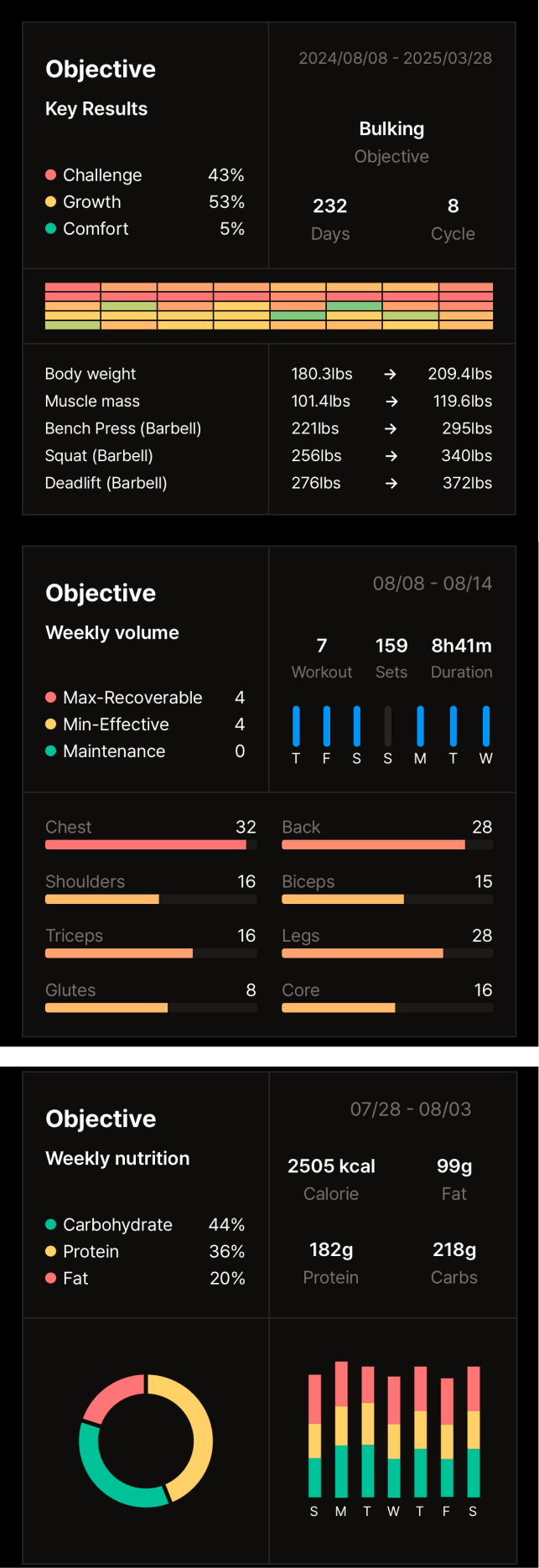What Is Periodization & Why It Matters
Have you ever wondered why some athletes seem to never hit a plateau while others struggle to improve? The secret often lies in a strategic approach to training known as periodization. This article will explore periodization, a method that helps athletes optimize performance and avoid burnout. Professional athletes, from Olympic swimmers to marathon runners, have transformed their training routines using this powerful technique. Whether you're a beginner or a seasoned fitness enthusiast, understanding periodization can unlock your true potential.
What is Periodization?
The Basics of Periodization
Periodization is a systematic approach to training that involves dividing a training program into distinct phases. Each phase has specific goals, such as building strength, increasing endurance, or peaking for a competition. This structured approach originated in sports science and is now widely used by athletes of all levels. Think of it like a school curriculum: each semester builds upon the previous one, progressively developing your knowledge and skills. In fitness, periodization similarly progresses your training, leading to greater gains.
The Core Principles of Periodization
Three core principles guide periodization: specificity, overload, and progression. Specificity means tailoring your training to your specific goals. For example, a marathon runner will focus on long-distance running, while a weightlifter will concentrate on strength training. Overload involves progressively increasing the demands placed on your body, pushing you beyond your current limits. This could mean lifting heavier weights, running longer distances, or increasing training frequency. Finally, progression refers to the gradual increase in training stimulus over time to continually challenge the body and promote adaptation. Recovery is essential for allowing your body to adapt and rebuild after intense training. Periodization strategically incorporates rest and recovery periods to prevent overtraining and injury.
Types of Periodization Models
Linear Periodization
Linear periodization is the most traditional model. It involves a gradual increase in training intensity and a decrease in training volume over time. This model is often favored by beginners due to its simplicity. For instance, a beginner weightlifter might start with lighter weights and higher repetitions, gradually increasing the weight and decreasing the repetitions over several weeks. A sample timeline might include a higher volume of general fitness exercises in the first few weeks, progressing to more sport-specific training with increasing intensity as the target event approaches.
Undulating Periodization
Undulating periodization involves varying training intensity and volume within shorter cycles, typically weekly or even daily. This approach introduces more variety and can be beneficial for intermediate athletes who have adapted to linear progression. For example, a runner might alternate between high-intensity interval training, moderate-paced runs, and long, slow distance runs throughout the week. This approach keeps the body challenged and prevents plateaus.
Block Periodization
Block periodization is a more advanced model designed for athletes aiming for peak performance in specific competitions. It involves dividing the training year into concentrated blocks, each focusing on a specific skill or attribute. For instance, a swimmer might dedicate a block to improving stroke technique, followed by a block focused on building strength, and finally a block dedicated to speed training.
Benefits of Periodization in Fitness
Enhancing Athletic Performance
Periodization helps athletes reach peak performance at the right time, such as for a major competition. By strategically manipulating training variables, athletes can optimize their strength, speed, endurance, and overall performance when it matters most. Many elite athletes and teams, including Olympic athletes, utilize periodization to maximize their chances of success.
Preventing Injuries and Overtraining
Structured recovery periods within a periodized plan are crucial for preventing overtraining and reducing the risk of injuries. Overtraining can lead to fatigue, decreased performance, and increased susceptibility to illness. Periodization ensures that athletes have adequate time to rest and recover, allowing their bodies to adapt and rebuild. Many athletes have successfully avoided injuries and burnout by incorporating periodization into their training.
Long-Term Progress and Adaptation
Periodization promotes long-term progress and adaptation by continually challenging the body. By cycling through different training phases, athletes avoid plateaus and continue to improve over time. Research has shown that periodized training leads to greater gains in strength, endurance, and overall fitness compared to non-periodized training.
How to Implement Periodization in Your Training
Assessing Your Goals and Current Fitness Level
Before designing a periodized plan, it's essential to assess your goals and current fitness level. Set realistic goals that are specific, measurable, achievable, relevant, and time-bound (SMART). Honestly evaluate your current fitness level through assessments like strength tests, endurance tests, or body composition analysis. Beginners should start with a simpler program and gradually increase complexity as they progress.
Designing a Periodized Workout Plan
Creating a personalized periodization plan involves several steps. First, determine your training cycles (macrocycles, mesocycles, microcycles). Then, outline the specific training goals for each phase. Next, select appropriate exercises and determine the sets, repetitions, and rest periods. Finally, track your progress and make adjustments as needed.
Adapting Periodization for Different Sports and Goals
Periodization can be adapted for various sports and goals. For strength training, periodization might involve cycling through different rep ranges and training methods. For endurance sports, periodization might involve varying the duration and intensity of workouts. Competitive athletes will often use more complex periodization models to peak for specific events. Athletes across various disciplines, from basketball to cycling, have successfully utilized periodization to achieve their goals.
Conclusion
Periodization is a powerful tool for optimizing athletic performance, preventing injuries, and ensuring long-term progress. By strategically structuring your training, you can achieve greater gains and avoid plateaus. Start by assessing your goals and fitness level, then design a personalized periodization plan that aligns with your specific needs. Consider exploring advanced periodization strategies or the role of nutrition in periodized training to further enhance your results. Apply these principles to your training and experience the benefits of smarter, more effective workouts.

